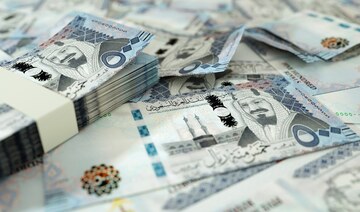Saudi Arabia’s Money Supply Hits SR2.97 Trillion, Marking 9 Percent Annual Rise
The latest official data from the Saudi Central Bank (SAMA) has revealed that the country’s money supply surged to SR2.97 trillion ($791 billion) in January, registering a significant 9 percent annual increase. This growth in money supply is reflective of shifting monetary conditions and highlights the ongoing evolution of Saudi Arabia’s financial ecosystem.
According to SAMA figures, demand deposits accounted for 48.75 percent of the total, reaching an impressive SR1.45 trillion. While this figure is still below the April 2021 peak of 60.21 percent, it has edged up from 48.42 percent a year ago, indicating a shift in the composition of the money supply.
Demand Deposits: The Lifeblood of Money Supply
Demand deposits are an essential component of the money supply, as they account for a significant proportion of total deposits. When individuals deposit money into checking accounts, it increases the total amount of demand deposits, thereby expanding the overall money supply in the economy.
In simple terms, demand deposits refer to money held in bank accounts that can be withdrawn at any time, whenever the account holder requires it. These funds are generally used for everyday expenses and are often subject to little to no interest on the balance in a demand deposit account. This is in contrast to other types of deposits, such as time and savings deposits, which offer higher interest rates but require customers to keep their money locked in the account for a specified period.
Time and Savings Deposits: A Reflection of Shifting Monetary Conditions
Time and savings deposits have played a significant role in shaping Saudi Arabia’s money supply. During the US Federal Reserve’s aggressive rate hikes, mirrored by Saudi Arabia due to the riyal’s peg to the US dollar, these types of deposits surged to SR985.03 billion in January, accounting for 33.21 percent of total deposits.
However, as the Fed began easing monetary policy in September, lowering interest rates from their 6 percent peak to 5 percent by December, time deposits started to decline from their 33.61 percent high in November. This shift reflects a gradual return to shorter-term deposit preferences as rate-sensitive accounts adjust to a lower-yield environment.
Other Quasi-Money Deposits: A Complex and Nuanced Category
The third-largest category of deposits, other quasi-money deposits, includes residents’ foreign currency accounts, marginal deposits for letters of credit, outstanding remittances, and bank repo transactions with the private sector. These types of deposits totaled SR301.28 billion in January, making up 10.16 percent of total deposits.
Currency Outside Banks: A Vital Component of Money Supply
The amount of currency outside banks, which includes cash held by individuals, businesses, and other entities, stood at a significant SR233.71 billion. This figure is an essential component of the money supply, as it reflects the physical cash in circulation within the economy.
A Shift Towards Demand Deposits: A Reflection of Changing Monetary Conditions
Over the past two years, the Fed’s aggressive rate hikes aimed at curbing inflation led to a rise in term deposits as customers sought higher-yielding accounts. However, with benchmark rates now easing, demand deposits have started to regain share.
This shift towards demand deposits is reflective of changing monetary conditions and highlights the ongoing evolution of Saudi Arabia’s financial ecosystem. As deposit inflows moderate, Saudi banks have increasingly turned to external borrowing to bridge funding gaps, underscoring the evolving financing landscape in the kingdom.
Saudi Banks’ Loan-to-Deposit Ratio Holds Steady
The loan-to-deposit ratio (LDR) is a key banking metric that measures the proportion of loans issued by banks relative to their total deposits. The LDR rose to 82.78 percent in January, up from 80.05 percent in the same month last year, yet slightly lower than December’s 83.24 percent.
This increase over the past year reflects strong credit demand, particularly from corporate borrowers in key Vision 2030 sectors such as real estate, infrastructure, and industrial expansion. However, the slight month-on-month decline suggests a stabilization in lending activity, as banks balance loan issuance with available deposit inflows.
Conclusion
Saudi Arabia’s money supply has reached SR2.97 trillion, marking a significant 9 percent annual rise. The surge in demand deposits reflects shifting monetary conditions and highlights the ongoing evolution of Saudi Arabia’s financial ecosystem. As deposit inflows moderate, Saudi banks have increasingly turned to external borrowing to bridge funding gaps, underscoring the evolving financing landscape in the kingdom.
The loan-to-deposit ratio holds steady, with a slight month-on-month decline suggesting a stabilization in lending activity. This stability is a welcome development, ensuring ample liquidity and financial stability within the banking system. As Saudi Arabia’s financial ecosystem continues to evolve, it will be essential to monitor these trends closely to ensure that the kingdom’s banks remain resilient and well-positioned for future growth.

